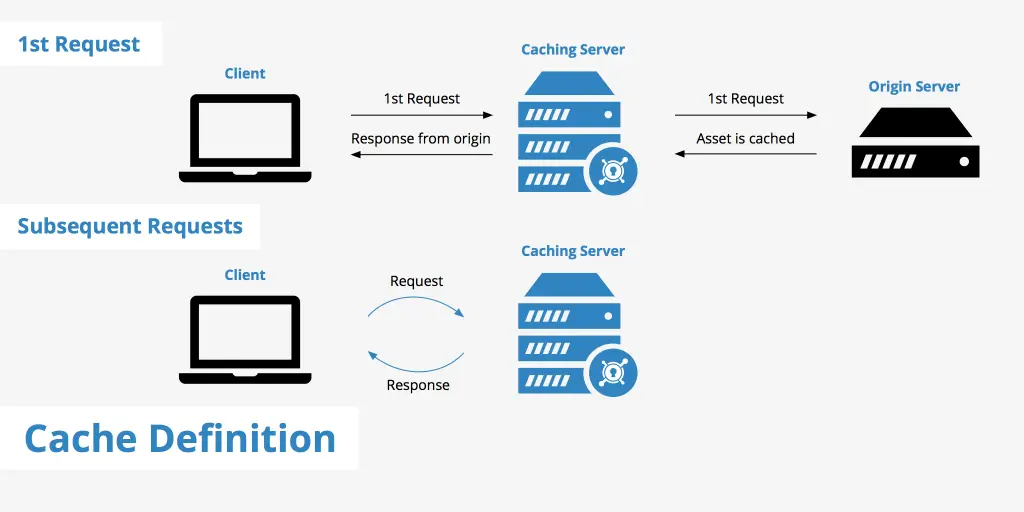Cache Server is a server used to speed corporate access to Web content on the Internet by caching the Web pages that users most frequently request.
What is Cache Server?
A server used to speed corporate access to Web content on the Internet by caching the Web pages that users most frequently request.

What is Cache Server?
Cache servers reduce network traffic and speed up access to frequently requested content by caching that content. Pages are held in the cache until they expire. If a user requests a page that has recently been cached, the page will be retrieved from the cache server instead of from the Internet. The cache server thus stores the content closer to the users who need it, reducing overall WAN link traffic and congestion. This saves valuable bandwidth on the wide area network (WAN) connection between the company’s network and its Internet service provider (ISP).
Many firewalls and proxy servers include some form of content caching. While firewalls and proxy servers are mainly concerned with securing access between a private corporate network and an untrusted public network such as the Internet, including cache server functionality in these products enhances their overall performance.

Cache server scheme
Dedicated cache servers are also starting to be used in high-traffic situations within the Internet backbone itself to reduce congestion of the backbone. Content caching servers can be located at ISPs and Network Access Points (NAPs) for improving the performance and responsiveness of the Internet.
Microsoft Forefront Threat Management Gateway
Microsoft Forefront Threat Management Gateway (Forefront TMG), formerly known as Microsoft Internet Security and Acceleration Server (ISA Server), is a network router, firewall, antivirus program, VPN server and web cache from Microsoft Corporation. It runs on Windows Server and works by inspecting all network traffic that passes through it.
The Forefront TMG product line originated with Microsoft Proxy Server. Microsoft Proxy Server v1.0 was first launched in January 1997 and was designed to run on Windows NT 4.0. Microsoft Proxy Server v1.0 was a basic product designed to provide Internet Access for clients in a LAN Environment via TCP/IP. Support was also provided for IPX/SPX networks (primarily used in legacy Novell NetWare environments), through a WinSock translation/tunneling client which allowed TCP/IP applications, such as web browsers, to operate transparently without any TCP/IP on the wire. Although well-integrated into Windows NT4, Microsoft Proxy Server v1.0 only had basic functionality and came in only one edition. Extended support for Microsoft Proxy Server v1.0 ended on 31 March 2002.
Microsft Proxy Server
Microsoft Proxy Server v2.0 was launched in December 1997, and included better NT Account Integration, improved packet filtering support, and support for a wider range of network protocols. Microsoft Proxy Server v2.0 exited the extended support phase and reached end of life on 31 December 2004.
On 18 March 2001, Microsoft launched Microsoft Internet Security and Acceleration Server 2000 (ISA Server 2000).
Forefront TMG 2010) was released on 17 November 2009. It is built on the foundation of ISA Server 2006 and provides enhanced web protection, native 64-bit support, support for Windows Server 2008 and Windows Server 2008 R2, malware protection and BITS caching. Service Pack 1 for this product was released on 23 June 2010.
On 9 September 2012 Microsoft announced no further development will take place on Forefront Threat Management Gateway 2010 and the product will no longer be available for purchase as of 1 December 2012. Mainstream support ceased on 14 April 2015 and extended support will end on 14 April 2020.